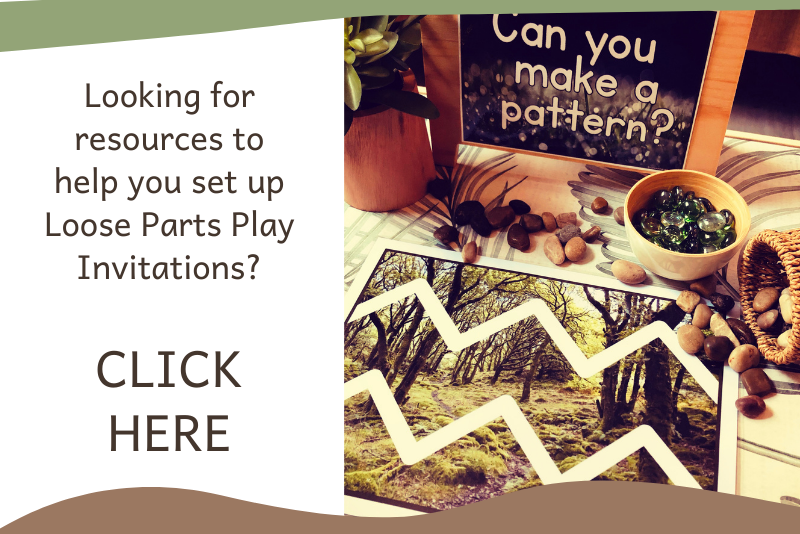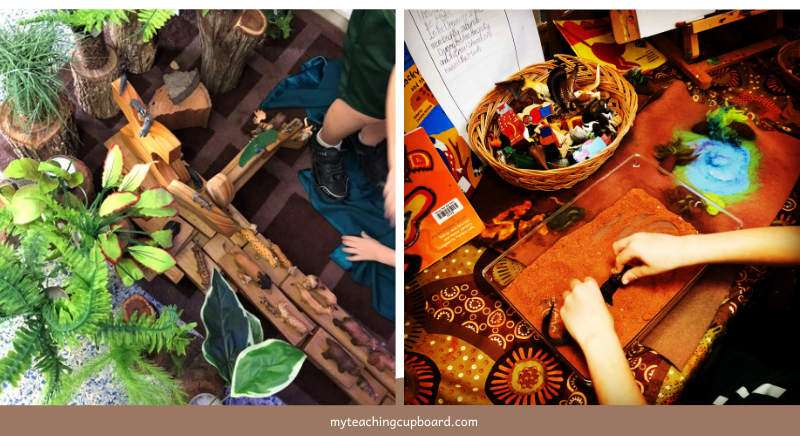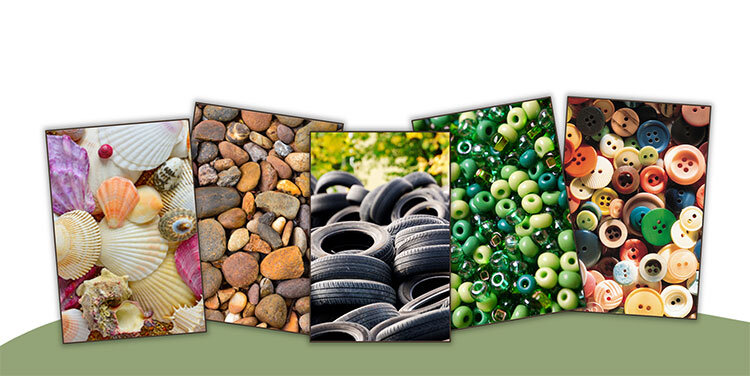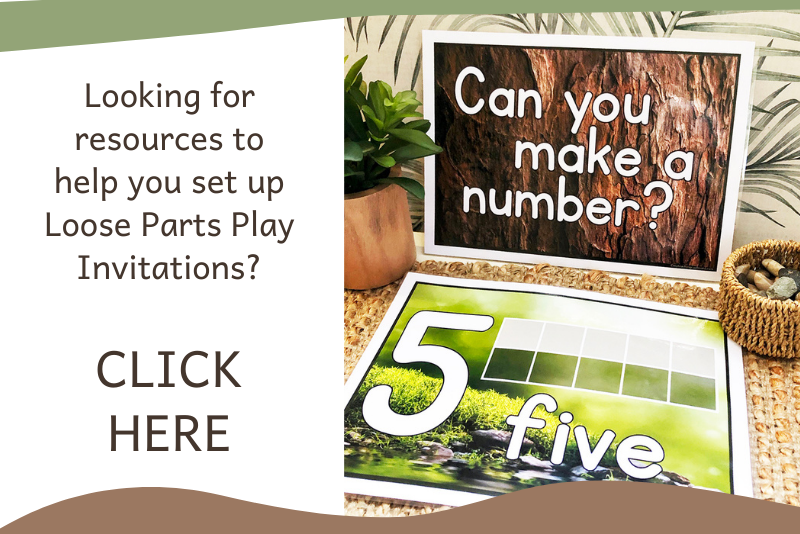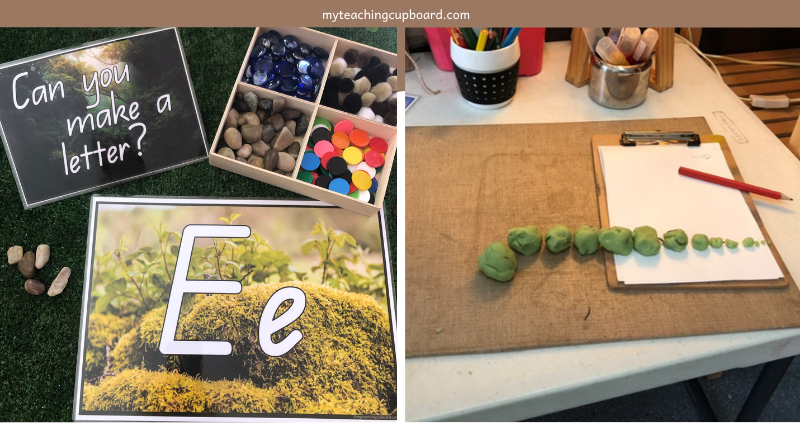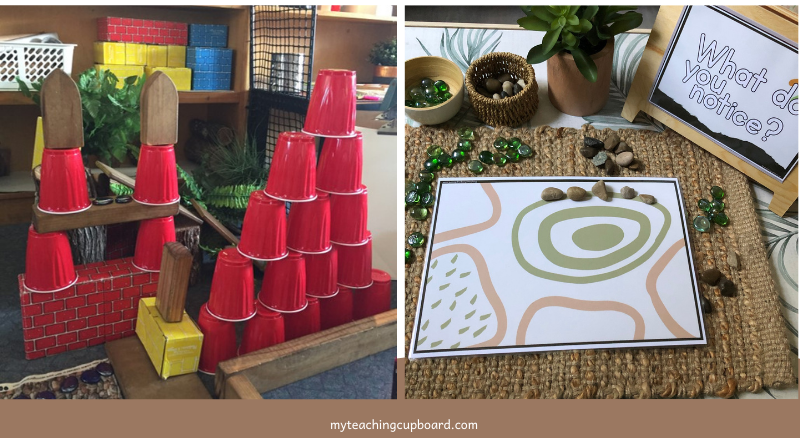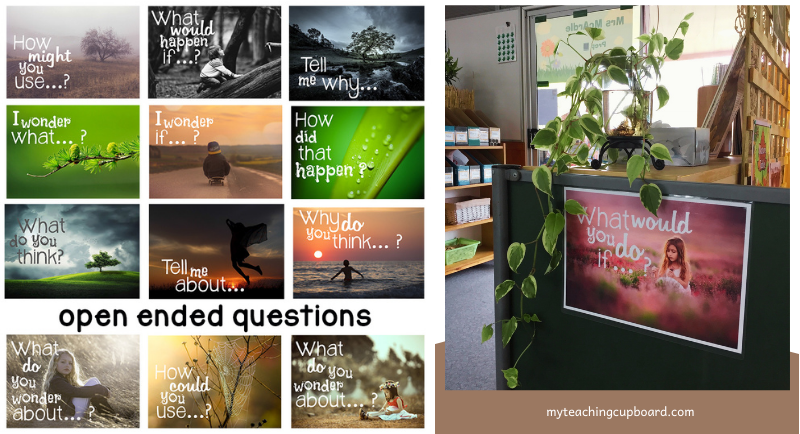Loose Parts Invitation to Play - How to Set up an Inspiring Loose Parts Invitation to Play
Are you interested in setting up some engaging invitations to play using loose parts? In this blog post you will discover how to use open-ended loose parts in your learning invitations.
Read on to find out how to set up those inspiring loose parts provocations and be on your way to fostering engagement and higher order thinking skills in your classroom.
Children can use loose parts in such a wide range of ways. They might use them to make transient art, to build with or even as props to tell a story. As an added benefit, including loose parts in your investigative play spaces will inspire your children to develop their creative and critical thinking skills too.
Loose parts play has soooo many learning benefits! If you would like to learn more about all the benefits of loose parts play, you might be interested in checking out this blog post: Benefits of Loose Parts Play
How do Children Use Loose Parts?
As you observe the children in your classroom playing with loose parts, you will see them use the same open-ended material over and over and in many different ways. A stick to one child could turn into a wand in dramatic play, a flag pole at the blocks construction area or even a candle for a play dough cake.
If children are given the opportunity to investigate and play with open ended loose parts, they will explore them, count them, build with them and no doubt surprise you with their creative and critical thinking ideas.
The Teacher’s Role in Loose Parts Play
You know loose parts play is beneficial to learning.
You understand what loose parts are and how children play with loose parts.
But are you wondering what your role is in loose parts play?
What should the teacher be doing while the children are playing and exploring the loose parts?
Should you step in?
When do you step in?
These are all questions teachers often ask when they start on a play based learning journey. Loose parts play is no different to any other hands-on learning investigation.
Your first role in loose parts play is to simply provide your children with loose parts which are open ended in nature. Because loose parts are open-ended, they will have endless possibilities.
Learning materials which are closed in nature are materials which can usually be used for only one purpose. If you would like a list of over 150 open-ended loose parts resources ideal for inviting loose parts play, download this comprehensive list HERE in my Free Resources library.
The teacher’s role in any loose parts play invitation is more than just supplying the loose parts though. You also have a crucial role in facilitating loose parts play. You will need to take on the role of observer and researcher.
As a researcher you will primarily be observing and sometimes interacting with your children as they play. You can then use your observations to guide you and inform you on ways to scaffold each child’s learning. Your observations will also inform your curriculum planning going forward.
While my children are working with loose parts, I often carry around an observation checklist on a clip board to take notes on. You can download the checklist I use HERE in the FREE Resources Library.
As children explore the loose parts, an opportunity may arise where you can scaffold and extend their learning. Ask questions like, “How many candles are on your cake?” or “Can you show me how you counted those flags?”
The teacher’s role in loose parts play is to observe, engage and scaffold loose parts play. If you are interested in learning more about your role, you might like to read this blog post: The Teacher’s Role in Loose Parts Play
How to Set up Inspiring Loose Parts Provocations
Setting up engaging loose parts provocations doesn’t need to be complicated. Just follow these easy steps.
1. Decide Which Loose Parts to Offer
To set up an invitation for your children to explore loose parts, you first need to decide which loose parts you are going to offer the children. If you are looking for some ideas for possible loose parts you can use in your classroom, you might be interested in this blog post – Loose Parts Resources.
In the Loose Parts Resources blog post you will discover exactly what loose parts are and why you need them in your classroom. You can also download my free list of over 150 loose parts resources HERE.
Loose parts can be natural like shells or man-made like buttons. They can be very small like beads or very large like tyres. Loose parts can be new or old, recycled or intentionally purchased.
The main thing to remember about the loose parts you offer is that they can be used in a variety of ways and for numerous purposes. The loose parts you use to set up age-appropriate investigation areas and learning invitations in your early years setting can be collated collections around specific themes like all the same colour, all come from the kitchen, all soft materials or items all found in nature. Of course, sometimes the loose parts you offer can be completely random.
2. Choose Which Learning Area to Add the Loose Parts To
When you have decided on a few loose parts you can include in your learning invitation, the next step is to choose which of your learning areas you’d like to add your loose parts collection to.
There is NO right or wrong decision. The loose parts you offer and the area you choose to place them in doesn’t really matter.
3. Give Children Time to Explore the Loose Parts
Teacher Tip: Don’t be in a hurry to change up the area or the loose parts. Giving children repeated opportunities to explore the loose parts is important.
Children need the opportunity to repeat their explorations over and over. You might view this repetitive exploration as wasting learning time, but every teacher understands children need to perform some tasks over and over before it has been learned. Loose parts explorations are no different to any other learning. Repetition is vital for effective learning to occur.
You wouldn’t think of teaching one lesson on addition and then expecting the children in your class to have mastered this concept. You will have many, many explicit lessons on addition in your teacher planner because you know children need to be exposed to a new concept over and over.
The children in your class need repeated opportunities to explore the loose parts and to practice the skills they are learning through play over and over too.
4. Observe and Record
Remember to be an observer and researcher. Resist those teacher urges to intervene and instead observe, take notes, and encourage your children’s investigations through scaffolding and clarification questions.
You will be using this very first invitation to play with loose parts as a stepping-stone to future invitations and learning. Your observations of the children and how they use the loose parts will inform not only future learning invitations, but also your explicit teaching lessons too.
If you are looking for open ended questions and prompts you can ask your children whenever they are working with loose parts, I have designed 30 open-ended question prompts which will encourage higher order thinking in your children.
Open ended questions will enrich the academic and social learning in your classroom by encouraging your children’s natural curiosity and prompt higher order thinking skills.
You will receive a .pdf file containing 30 beautiful open-ended question prompts. Each prompt is designed to be printed on A4 paper or card. If you wanted them to be a smaller size, you could tile the printing to have 2 or 4 images to a page. I do recommend printing them at a high quality to achieve the stunning quality.
I place these cards around my room to prompt my questioning when I’m interacting with the children. They help me to challenge the children to think about their learning and provoke new thinking. They are also a great reminder for me to invite the children to share their thinking and their view of the world.
These beautiful prompts are also a lovely way to add beauty and value to a learning centre. Just include one or two of these open-ended question photos in your learning centre provocation. They will help you and other educators in the room to take the learning to the next level.
If you are interested in learning more about loose parts and incorporating them in your classroom, you might like to investigate the Reggio Emilia Philosophy. This teaching philosophy and view of the child will provide you with more inspiring and thought provoking ideas on how to incorporate loose parts into your learning environment.
“The wider the range of possibilities we offer children, the more intense will be their motivations and the richer their experiences.” -Loris Malaguzzi, Founder of the Reggio Emilia Approach
You might also be interested in some other blog posts I have written on loose parts
I also have a Loose Parts and Block play Pinterest board you might like to follow. On this board I pin ideas for loose parts play and block play for preschool, kindergarten and first grade children. You will find a variety of loose parts activities to try in your classroom as well as loose parts and block play inspiration. There’s even a few pins on loose parts storage and organisation ideas too.
If you liked this blog post about creating loose parts invitations to play, please consider sharing it...
Just CLICK the sharing box below.👇


